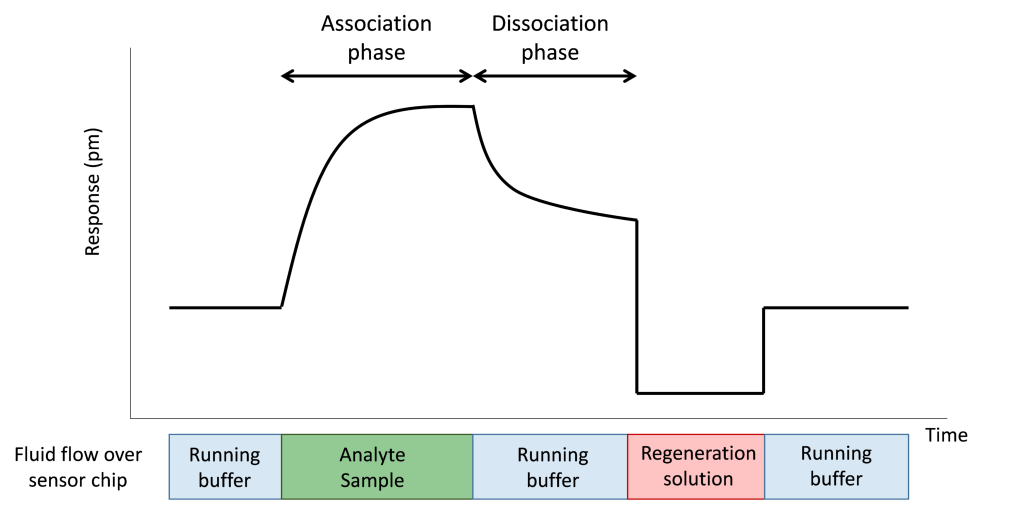Surface plasmon resonance is an analytical technique for studying molecular interactions.
Surface plasmon resonance or SPR is an optical effect that can be utilized to measure the binding of molecules in real-time without the use of labels. SPR instruments are primarily used to measure the binding kinetics and affinity of molecular interactions. SPR can be used, for example, to measure the binding between two proteins, a protein and an antibody, DNA and a protein, and many more. SPR is unique because it is one of the few techniques that allows determination of binding kinetics and not just binding affinity, as you would get from traditions techniques like ELISA. The binding kinetics, or the on and off rates, can only be determined with a biosensing technique that gives real-time binding data of both the association and dissociation phases of the interaction. This data gives detailed insight into the binding strength and stability of the interaction, which is critical for many industries and research areas. It helps researchers determine which molecules interact, why they interact, and how strongly they interact.

The data from SPR is critical in a number of industries, and has been in use for over 25 years by companies like Pfizer, Roche, and GSK and by many universities throughout the world. Some examples of its applications include:
- Screening and developing new pharmaceuticals and new biotherapeutics
- Quality control in bioprocess monitoring
- Developing new diagnostic assays
- Basic research such as discovering and characterizing protein function, disease mechanisms, etc.
SPR has a number of advantages over other common assay techniques:
- Label-free (less expensive and easier to perform)
- Small sample volumes (100-200uL)
- High sensitivity (can be used for small molecules to large proteins)
- Real-time (giving deeper insight into the binding kinetics compared to yes/no binding or affinity techniques)
- Quantitative
Make your next scientific breakthrough with SPR
Are you looking to obtain affinity and kinetics data for your next publication? To help you get started, we’ve gathered our expertise on this information-rich technique into a handy eBook.
